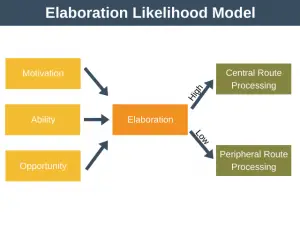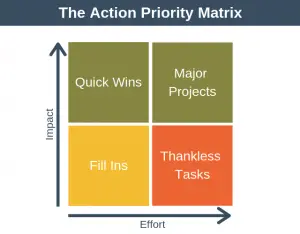Groupthink occurs in groups when individual thinking or individual creativity is lost or subverted to stay within the comfort zone of the consensus view. People’s common sense and ability to perform problem solving, make good decisions, and raise unpopular views are overridden by the desire for group consensus.
Under certain sets of circumstances, which we’ll cover shortly, it’s possible for us all to succumb to groupthink, no matter how well educated and logical we consider ourselves. Have you ever thought about raising an issue or question in a group meeting, but then refrained because you didn’t want to destroy the consensus view the team had spent considerable time forming, or because you didn’t want to appear to be the only unsupportive member of the team? Conversely, have you ever been a manager who has had to force a team through change when clearly the team was reluctant and not expressing their true opinions? If you answered yes to either of these questions then it may be because of groupthink.
A classic example of groupthink was the decision making process that lead to the Bay of Pigs invasion, whereby the US administration looked to overthrow Fidel Castro. In this instance president Kennedy made the decision, and through the strength of his character the rest of the team supported him despite having their private concerns.
Another example of groupthink that is often cited in business books, is that the Challenger Space Shuttle disaster was caused by groupthink. These books will quote how Nasa knew about the potential for failure but did not want to delay the launch so they went ahead with the launch anyway. However, what is really interesting about this example is that groupthink did not cause the disaster; faulty o-rings did, with groupthink being a contributory factor on the day of launch, when the program manager plus others met with one of the contractors. The fact that all of these business books blame groupthink as the cause of the disaster is in itself a kind of groupthink, and thus not without irony.
Conditions of Groupthink
William H. Whyte coined the term groupthink in Fortune magazine in 1952, but it was Irving Janus who did considerable research on it in the 1970s. Janus identified three conditions which can be used as clear groupthink warnings:
- Directive leadership: where the group leader directs the group and its discussions.
- Group homogeneity: where the group know each other, come from the same social background, and share the same ideology.
- Group isolation: where the group does not have exposure outside information which could be used to help reach a more balanced decision.
Since Janus produced the above list it has become clear that groupthink can occur within many different types of groups. For this reason it’s important to look out for the symptoms of groupthink, again put forward by Janus.
Symptoms of Groupthink
The eight symptoms of groupthink defined by Janus are as follows:
1. Illusions of Invulnerability
The group begins to believe it’s own hype and starts to think it always makes the right decisions – they can do no wrong.
2. Rationalization of Warnings
The group convinces itself that despite evidence or warnings to the contrary it is making the right decision. The group creates rationalizations such as, “We know there is contrary opinion to this decision but we’ve been right before in the face of negativity and we’ll we right this time too”.
3. Complacency
After reaping the rewards of making many correct decisions the group begins to overlook the negatives. Think how derivative models were never run showing what would happen to a banks financial position if house prices began to fall in the years leading up to 2007.
4. Stereotyping
Those who are opposed to the group are pigeonholed as heretics, non-believers, or just plain stupid.
5. Loyalty Pressure
Direct pressure is place on any team member who raises a contrary opinion, with typically the entire group openly calling the team member disloyal or fickle.
6. Self-Censorship
Individuals refrain from airing any private concerns they may have for fear for ridicule, for example, if you are in a group with 10 clever people who all agree with each other, then you begin to question if you might look like a fool for raising your concern – perhaps you a just being stupid.
7. Illusion of Unanimity
If asked, “does everyone agree with this decision?”, and nobody speaks up, then the decision is understood to have been made unanimously. In essence, silence is regarded as compliance.
8. Mind-guards
The group contains self-appointed members who protect the group from conflicting opinions from both inside and outside of the group.
Avoiding Groupthink
Projects managers, program managers, and indeed group leaders at all levels need to be mindful of groupthink and actively work to avoid it. After the Bay of Pigs, president Kennedy actively sought to avoid groupthink during the Cuban Missile Crisis by inviting outside experts into discussions, and breaking the group into subgroups to discuss the problem separately, thus braking team cohesion.
There are a number of general principles and specific tools which can be used to avoid groupthink. Firstly, let’s examine the general principles:
- Explore different scenarios.
- Encourage each member of the team to be a critical evaluator, allowing them to openly question ideas and propose alternatives.
- Leaders should deliberately not express their opinion when asking a group to find a solution to a problem.
- Invite outside experts into the meeting and take their opinions seriously. Allow the group members to speak with the experts individually and privately if they desire.
- If the decision is major enough, instruct several different groups to solve the same problem simultaneously but independently of each other.
- Assign at least one group member to deliberately play the role of devil’s advocate.
Secondly, here are some of the specific tools you can use to avoid groupthink:
- The Nominal Group Technique: this gives group members the opportunity to contribute individually before group discussion begins.
- The Delphi Method: this allows group members to contribute individually without the group ever having to come together. The individual may not even be aware of who the other members of the team are.
- The Stepladder Technique: this starts with a group of two, and adds one member at a time to the group, allowing each new team member to express their opinion on the solution each time, before group discussion begins.
- The Six Thinking Hats Technique: forces the team to look at a problem from different perspectives.
Conclusion
Groupthink can lead to teams making the wrong decisions and so project managers, program managers, and indeed managers at all levels need to be mindful of it. Groupthink is particularly prevalent in cohesive groups, groups with a strong leader, and groups working in isolation. A number of general techniques exist to avoid groupthink, along with a number of specific tools, including Nominal Group Technique and The Delphi Method.










